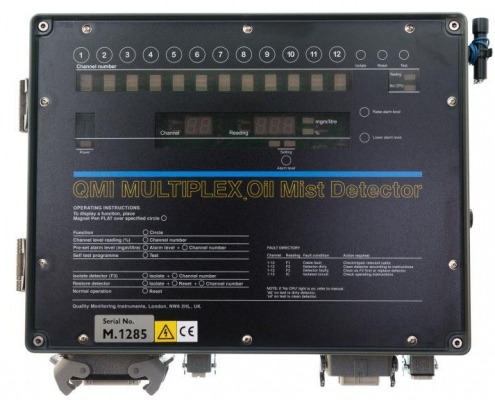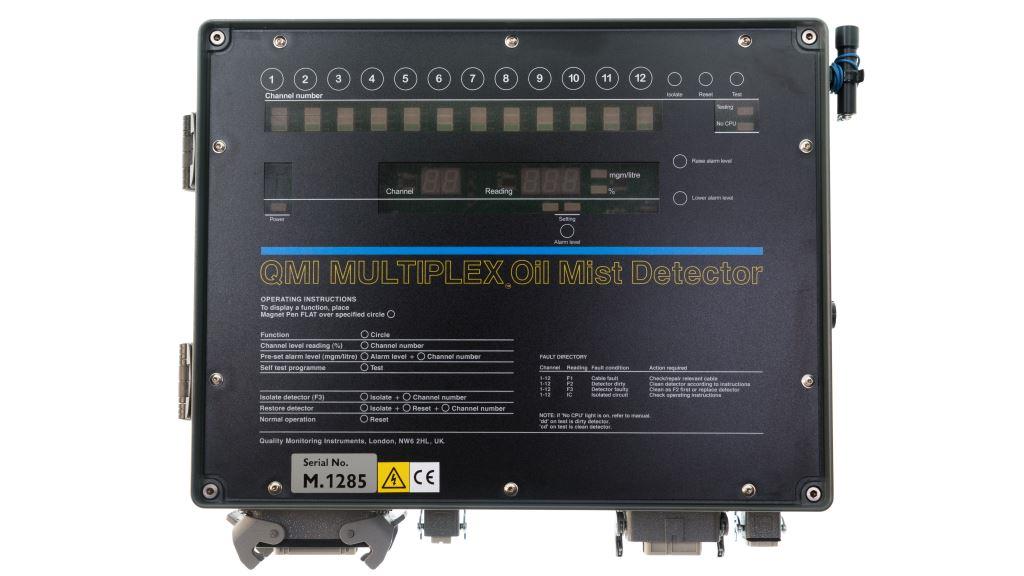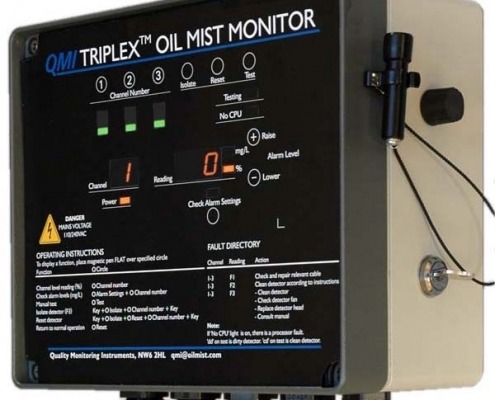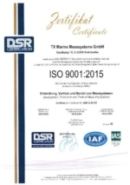Oil mist detector – QMI
The earliest recorded oil mist fires and crankcase explosions dates back to the genesis of diesel engine development, when Rudolf Diesel himself mentioned the problem in his early writings.
However, it was in 1947, following the MV Reina Del Pacifico disaster in which 28 people died, that the dangers of oil mist gained greater attention, though it wasn’t until the early 1960s that the first crankcase oil mist detector was introduced.
The need to monitor the accumulation of oil mist in an engine’s crankcase and machinery spaces was further recognized when classification reports estimated that between 1990 and 2001 some 700 engines were written off as a consequence of oil mist-based crankcase fires or explosions. P&I Clubs went further claiming that up to 65% of all ship fires were the result of pressurized fuel and lubricating/hydraulic oil droplets collecting in the atmosphere of machinery spaces.
Technology
This fine, highly flammable mist of between 1 and 10µm is produced at surface temperatures of between 200°C and 600°C, while droplets greater than 50µm are typically produced from pinhole leaks in a pressure line.
In an open machinery space, oil mist or spray of any droplet size must be treated as a potential fire risk and appropriate detection systems should be in place to safeguard ships’ crew and equipment before it becomes a MAIB incident.
The principle used in the early oil mist detection systems – obscuration light absorption – is still used by most manufacturers of oil mist detection systems to this day. The technology involves the extraction of the oil mist from selected points within the crankcase which is then transferred in sequence via discrete pipes to a central detector, usually mounted on the engine, with a facility for remote reading at a centralised panel.
However, these systems have a very slow response time which, in some cases, raises alarm after engine seizure or explosion has actually taken place.
When the lenses become obscured a false alarm can occur.
Benefits
To provide 100% oil mist detection accuracy and reliability, QMI systems use a proprietary light scatter (nephelometry) technology proven to:
- Eliminate false alarms
- Deliver rapid readings within 500 milliseconds of oil mist being detected
- Eliminate unnecessary pipework
- Allow for linear output (true zero)
- Quantify oil mist in mg/l
- Allow for up to 50% lens obscurity
- Allow for detector calibration
- Allow the use of smaller detectors
- Allow for optimum placement of detectors
- Monitor the condition of the engine
Sources of ignition
- Leaking injectors
- Fractured flexible hoses
- Loose or incorrectly fitted pipe fittings
- Broken welds
- Poor maintenance of machinery and pipe work
Sources of ignition
- Exhaust pipes
- Turbochargers
- Non-flameproof motors
- Electrical contacts
- Static electricity
- Faulty wiring
Product range
QMI-Engine Detector (Q02 oder Q02B)
- The QMI Engine Oil Mist Detector systems can be used with most engines.
- Detectors provide true oil mist readings in mg/l.
- Daily readings on all channels can be logged to provide an engine health check.
Triplex and Multiplex monitors incorporate a ‘traffic light’ system on each channel to ensure that operators know on first glance if there are hazardous concentrations of oil mist.
QMI Atmospheric Sensor (Q10)
- The QMI Atmospheric Sensor detects accumulation of oil mist in machinery spaces.
- Alarms are set at 0.05mg/l to provide adequate warning of a potential fire/explosion hazard. Atmospheric oil mist leaks can ignite immediately.
- Sensors can be placed in air flow channels or near to ventilation systems and known points of failure.
- Smoke generators can be provided to assess direction of air flows and turbulence.
QMI Multiplex Monitor (Q01H)
- Provides rapid 500 millisecond response times when the detectors are correctly mounted.
- Can monitor up to 12 detection points simultaneously.
- Can be mounted in the engine control rooms or on the bridge away from danger zones.
- Does not require a pressure regulator or heater to deal with condensation.
- Measures oil mist at source and does not have to travel along pipes, which delays response times.
- Does not require clean compressed air.
- Provides early warning and main alarm together with an engine shut/slowdown facility.
- Features a self-diagnostic fault finding capability to indicate instrument faults.
- Faults are displayed on the monitor so that the user is kept informed and need not fear false alarms.
- Will work even when one of the detectors has developed a problem.
- Can oversee more than one engine; monitor oil mist in the atmosphere around the plant, at the same time enabling detection of hazards before fires start.
- Is able to assess gearbox bearings together with the pistons and external surrounds for oil mist.
QMI Triplex Monitor (Q01T)
- Is for areas where only one, two or three sensors are required.
- Provides rapid 500 millisecond response times when the sensors are correctly mounted.
- Identifies a hazardous build-up of oil mist in confined zones.
- Gives advance warning of dangerous conditions in order to prevent the outbreak of fires.
- Sensors can be used in hydraulic pack locations, as recommended by OCIMF.
- Sensors can be used in main engine rooms, as recommended by IMO.
- The QMI TRIPLEX System is simple to install on new or existing vessels.
Did we spark your interest or do you have further questions?










